Banner photo is of the St. Clair wading pool on August 12th, 1936. From the City of Toronto Archives.
To repeat an overused refrain around town – man, is it hot. It’s high-summer here in Toronto and the city’s sweltering. Stepping outside is like being swaddled in an electric blanket – a damp, overheating, electric blanket – and frankly, I spend a lot of time daydreaming about being in cool water. Specifically, the heat’s made me nostalgic for being a kid, pulling on my bathing suit and walking over to the neighbourhood wading pool. I don’t know about you but it’s been a long time since I’ve felt the same degree of abandon I had as a kid walking down city streets in my bathing suit. That is some sweet, sweet freedom.
Anyhow, all this heat and nostalgia for public swimming got me wondering where our early Torontonians went to shed their many layers of clothing (for slightly fewer layers) to hit the water.
Strictly speaking, Lake Ontario was probably the first place where over-heated Torontonians took a dip in the late 18th and early 19th centuries. But it didn’t take too long for something a little more formal and controlled to be erected:
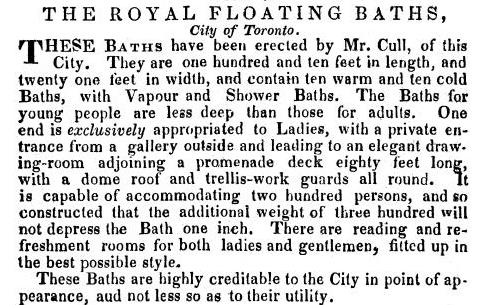
Though the ad above tried to keep it a secret, the Royal Floating Baths, built by James Cull in 1836, were located on Front St at the bottom of Frederick.
Born in Dorset, England in roughly 1779, Cull came to York in 1832 and set about his business as a – well, as just about everything. As far as I can tell, he was the embodiment of the phrase “jack of all trades, master of none.” When he first arrived from England, he’d already been a brewer, an inn keeper, a brick-maker and a highway commissioner. Once landed in Upper Canada, he parlayed this varied experience into a position with the Niagara Township Boundary Commission. As glamourous as that sounds, things got even more exciting for Cull.
Advertising himself as an engineer, he was awarded the contract to build the very first macadamized road in Upper Canada in 1833. One whole mile’s worth. Sadly, for Cull, the construction of the road was more difficult than he’d first imagined and he was unable to complete it as quickly as he’d promised. More importantly, the cost of the road was steadily rising and so the trustees eventually stripped him of the job.
Cull was pretty sore about losing the project and so, as one does, he threw himself into publishing instead and put out a paper called the Albion of Upper Canada. In its pages, Cull featured articles on science, agriculture and, his pet subject, engineering. …Unfortunately, that didn’t last long either:
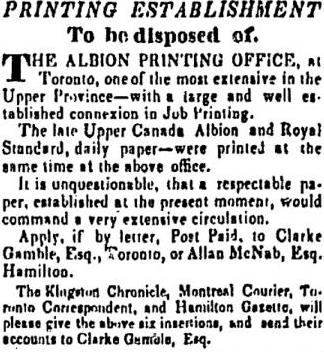
When his paper folded, Cull launched a comeback in the engineering sphere with such vaguely notable projects as the surveying of Port Stanley harbour and directing work on the macadamizing of the London-Port Sarnia road. Unfortunately, while working on the latter, his work was once again deemed too slow and he was let go.
But then, in 1840, he began work on a project remarkably grand in scale – something bound to bring him the recognition and respect he so deeply desired: the building of the Wolfe Island, Kingston and Toronto Railway.
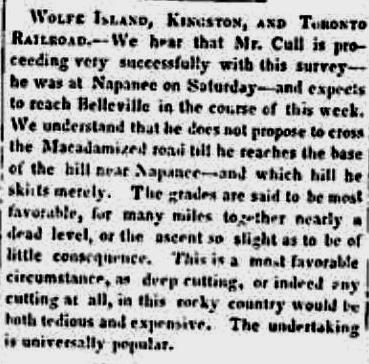
Well … funny enough, I’ve actually just returned from a vacation on Wolfe Island – the largest of the famed Thousand Islands. So I can tell you this with first-hand knowledge: there is no railway that connects the island with Kingston and Toronto. Had it happened, it would’ve be quite the feat – I mean, can you imagine laying out a railroad track from an island, through the St. Lawrence River and straight into Kingston? It’d have been amazing. But then, when you consider that he was never allowed to complete even one macadamized road on dry land, you realize they probably shouldn’t have gotten their hopes up. … poor Cully (sorry, somehow sympathy dictates adding a ‘Y’ to his name.)
But hey! On the upside, he did give Toronto its Royal Floating Baths – and most certainly there were many Torontonians who were very grateful to him for that.
By the 1850s, there were a few more options available to the bathing public. Among them were the City Baths. While they sound like they’d have been housed in a free-standing municipal building, they were actually part of Charles and William Wright’s hairdressers at Church and Front:
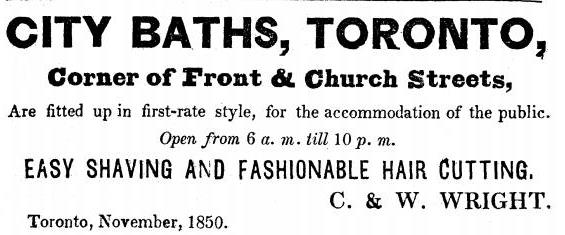
More popular than the Wrights’ baths were those just a short ferry trip away on the island:

These early island baths would be eclipsed by the very popular Wiman baths, built in 1882, by a remarkable character named Erastus Wiman:
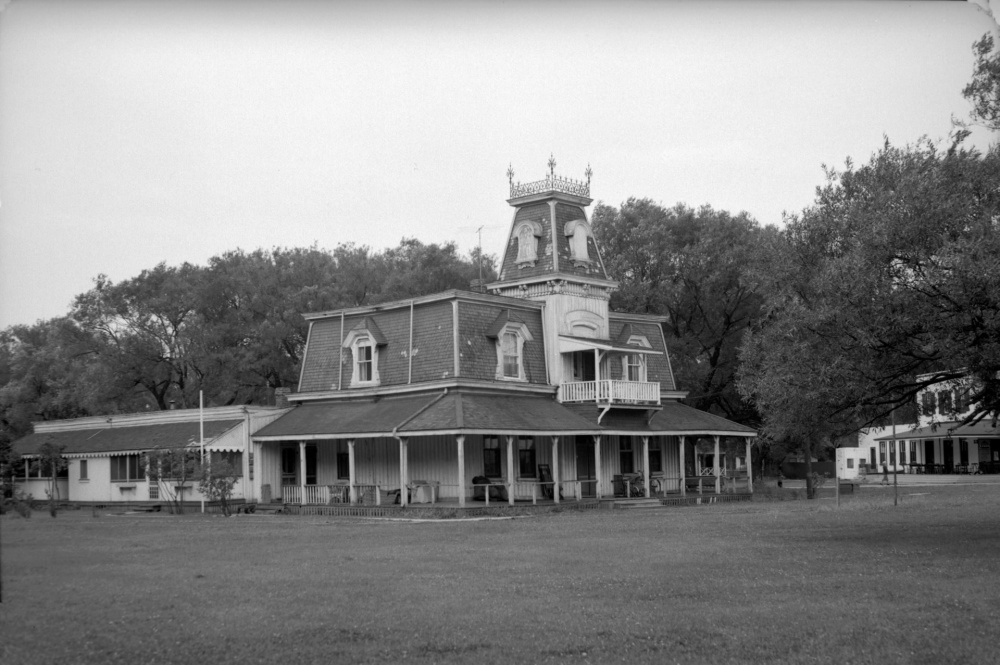
Wiman, born in Churchville, Ontario in 1834, began his working life as an apprentice printer at the North American – an early paper based in Toronto. He’d eventually move onto a job reporting for the Toronto Globe before entering the business world as manager of the Ontario branch of R. G. Dunn:
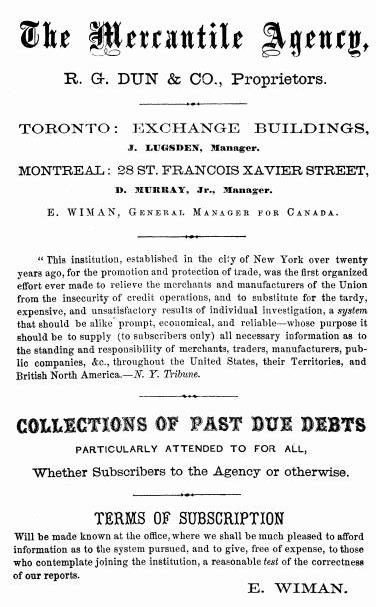
From there he’d move to New York to act as general manager of the firm. Well New York certainly had a hold on his heart, it seems, as he settled there and became a noted developer of Staten Island. Additionally, he became the president of the Staten Island Railway and was one of the first to propose connecting the borough to the other four by tunnel. For the baseball fans out there (like myself) an extra fun tidbit is that Wiman purchased the Metropolitan Baseball Club which played in the area, in 1885.
You know, it’s kinda funny that I set out to talk about baths and swimming pools and wound up with two men who dealt in newspapers and dreamed of railway expansion. (Though, to be honest, it’s hard to sift through the 19th century without turning up at least one of those subjects.) But where James Cull’s efforts fizzled, Erastus Wiman’s dazzled … until they didn’t.
Unfortunately for Wiman, it appears he lived a little too grand for his means and he was forced to declare bankruptcy in 1893. Shortly after, he made some poor decisions.

Happily for him, Erastus was able to avoid serving his prison term but lived out the few short years he had left in reduced circumstances:
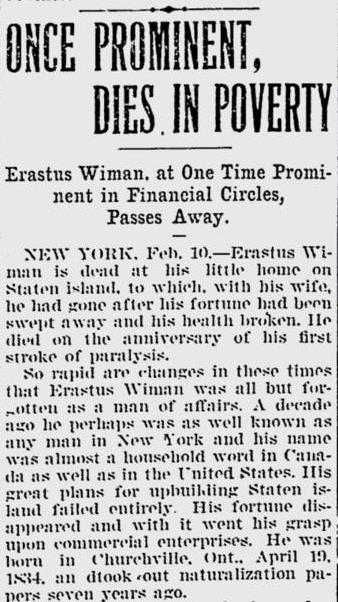
But enough of the follies of man …
In the 1890s, there were still not sufficient baths to meet the public need and this editorial took the city to task for it:
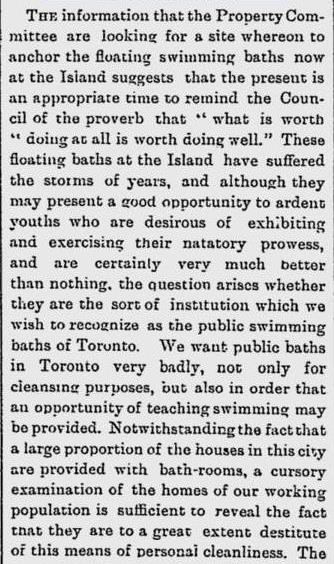
But the public swimming pools of the sort that I know (and I expect, you know) didn’t really start to crop up until the early 20th century.
Here are some of the earliest:
![Turner's Baths, Hanlan's Point West. - [ca. 1909]](https://onegalstoronto.files.wordpress.com/2016/07/turners-baths-hanlans-point-1909.jpg?w=1000)
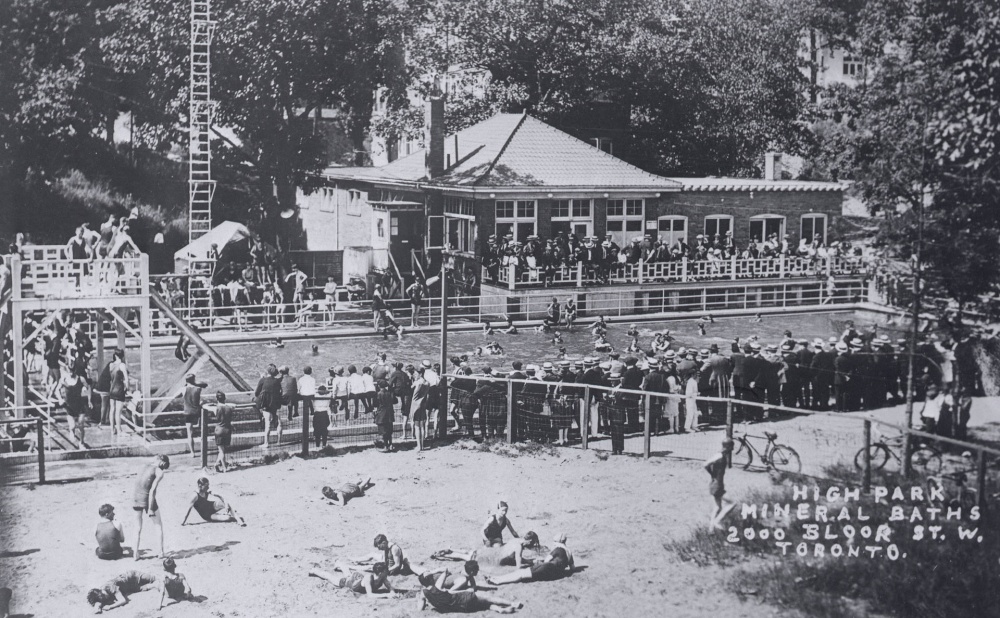
![Sand pool at Willowvale Park (Christie Pits). - [ca. 1910]](https://onegalstoronto.files.wordpress.com/2016/07/sand-pool-at-willowvale-park-christie-pits-circa-1910.jpg?w=1000)

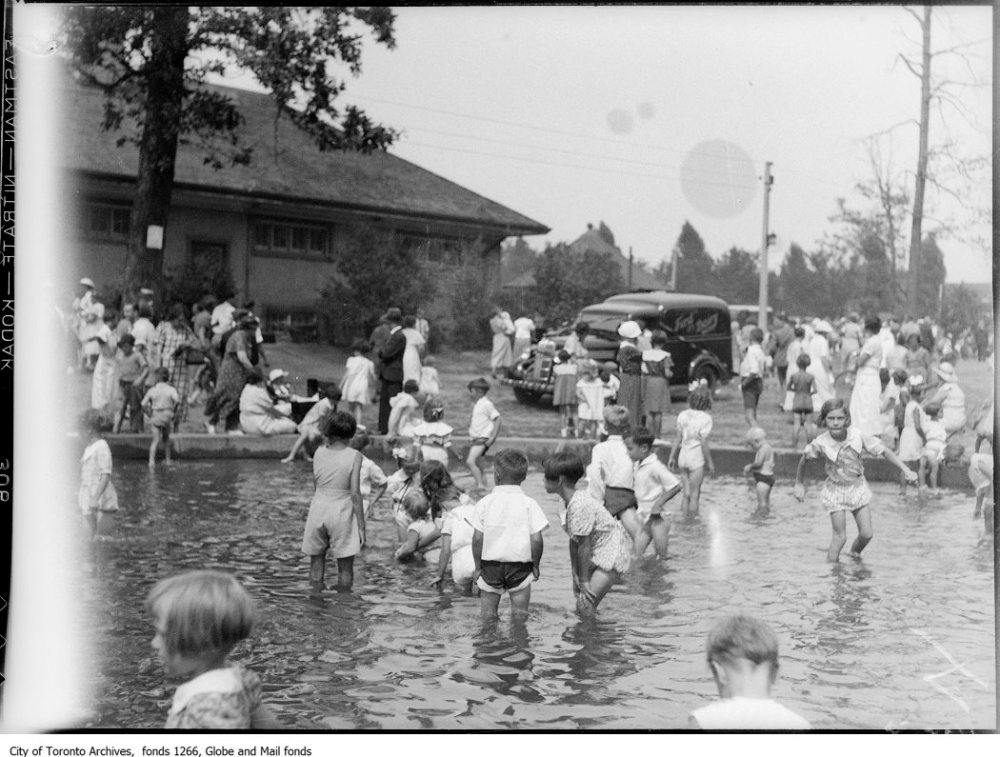
Perhaps – no, definitely – the grandest of all was Sunnyside:
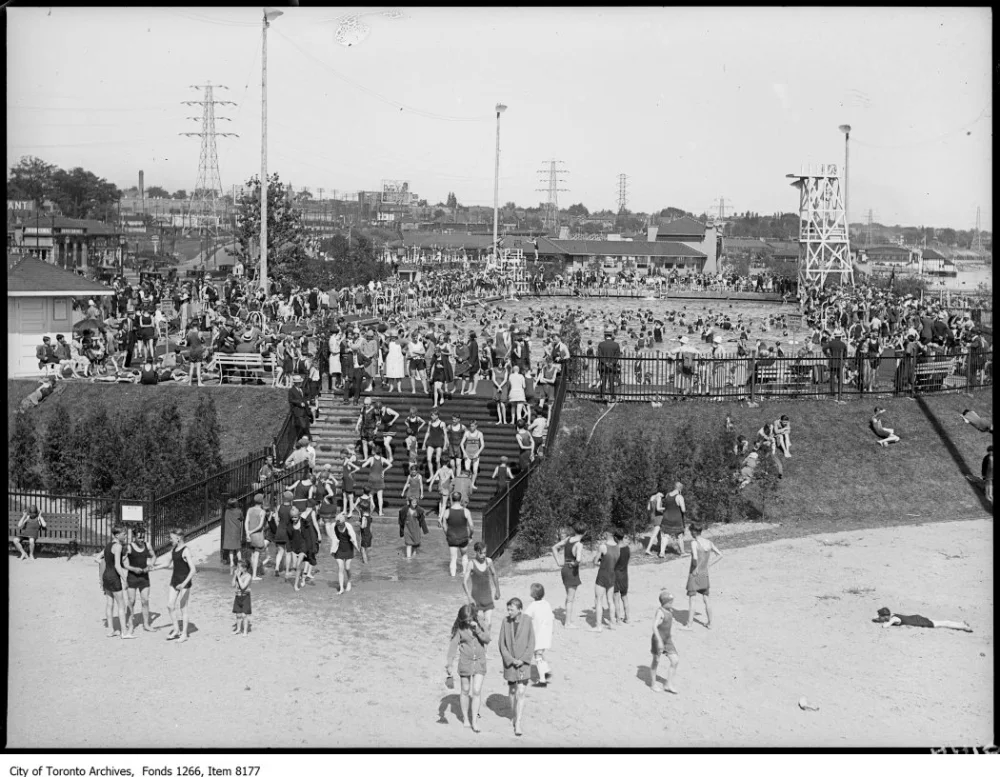
The beach, located near the foot of Roncesvalles, had always been a popular place for swimming and so, in 1922, a glorious pavilion was built to give the public a place to change into their swimsuits. But after a couple of cool summers drove the swimmers away, the city built a enormous pool which would be more inviting than the lake.
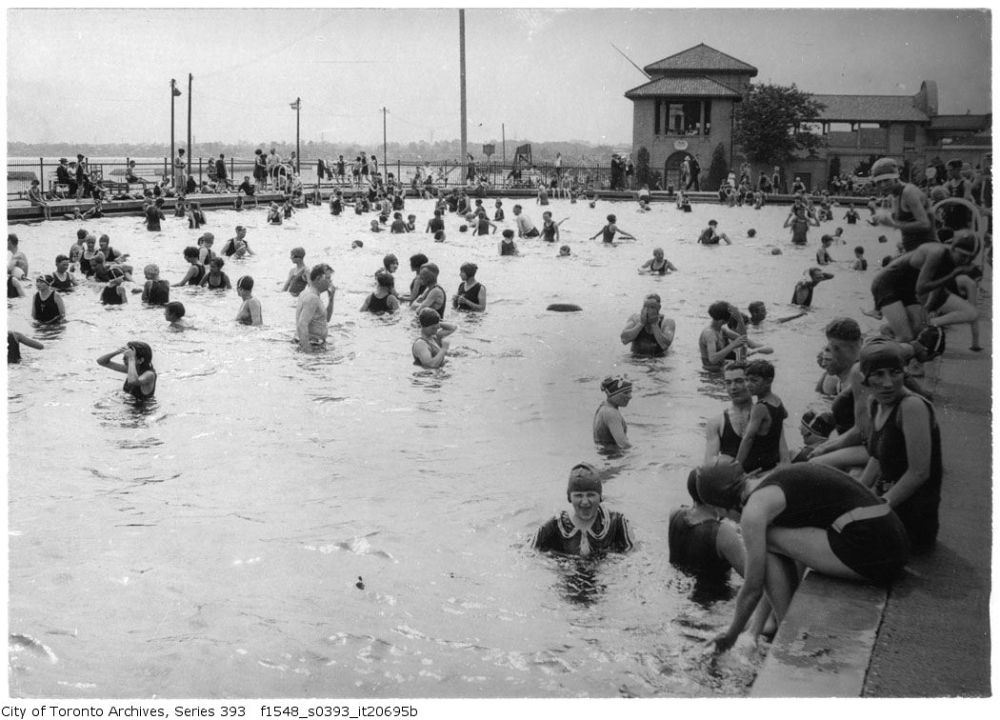
Growing up in the west end, Sunnyside was our “big pool.” As the youngest of three girls, I well remember my sisters taking me in tow for an afternoon at the pool. At that time (not so much now) I loved the feel of the wet concrete beneath my feet and the deliciously-fake coconut smell of suntan lotion in the air. Not sunblock, mind you – suntan lotion. Because it was the ‘80s and even then no one thought of trying to block out the sun. Being blond and on the pasty side of fair, I always returned home scalded pink but happy, scented with that wonderful perfume that comes of sun and chlorine.
Well, here it is the weekend again and the Toronto heat continues to press us into puddles. My sisters, now moved away to Mexico and California, are unlikely to be taking me out to the pool tonight so I guess I will have to find some cool water for myself. I don’t know where you are but, if it’s as hot there as it is here, I’d suggest you do the same.
Fascinating! Heat is heat and I can remember many summers around our neighborhood pool to cool off. The photographs and clippings you have gathered here are wonderful-
LikeLiked by 1 person
I’m so happy to hear you enjoyed it – and especially that you share fond memories of the neighbourhood pool!
LikeLiked by 1 person
I’m not really one for swimming, but I do love the building the Wiman baths were housed in. And of course all those surly swimming girls, complete with your excellent captions. I’m really more of a sprinkler girl myself…the lawn of my childhood home had those excellent built-in sprinklers, and they had a bunch of different fun settings. In fact, I still unashamedly run through the sprinklers of the golf course up the road from me on those rare days in London when it’s both hot enough and dry enough for them to turn them on!
LikeLiked by 1 person
Ha! I’m partial to a sprinkler run myself – though sadly, I haven’t come across one for some time. We always wanted a sprinkler when we were kids, so that we could have a Slip N’ Slide – but my mom went with a garden filled with exotic bushes and fruit trees, so we were stymied from the start.
I have to confess, I’m no swimmer. I can’t imagine why people enjoy doing endless laps. I mean, bully for them and all but it looks exhausting. My idea of enjoying a pool is just standing in the water and occasionally splashing like a kid.
I’m glad you enjoyed the gruff girls swim team too! They look like no fun at all.
LikeLiked by 1 person
I wanted a Slip N’ Slide too, but even though we had plenty of lawn, my parents were way too cheap to waste money on one when we could just use a giant piece of plastic sheeting. While in theory that was fine, I mean, you could slide down it and everything, in practice when you put a thin plastic sheet straight down on the ground, you hit every rock and bump on the way, and it was really pretty painful. Plus you’d usually fly off at the end and get grass burn (if that’s a thing). I think Slip N’ Slides inflate to avoid those very problems. Don’t get me wrong, it was fun, but not really the same thing.
LikeLiked by 1 person
Yikes! That sounds grisly – and also like something my parents would’ve come up with 🙂
LikeLiked by 1 person